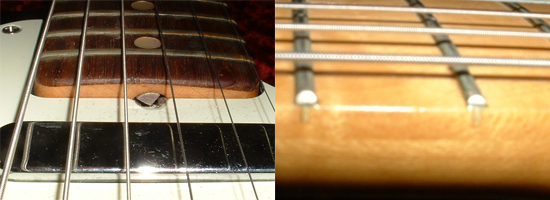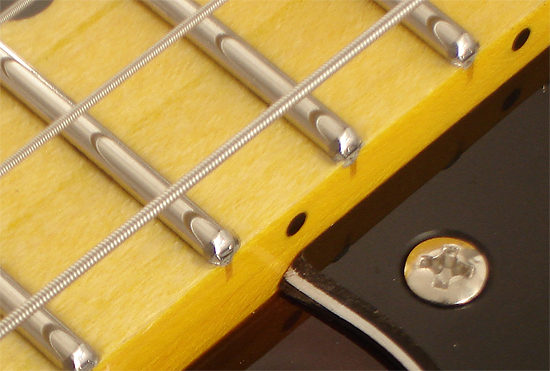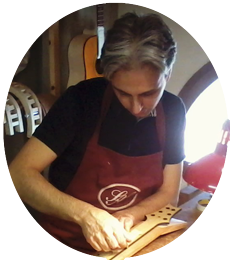
Visit the new website: www.buildyourownguitaronline.com
HOME > Guitar fretboard wood
GUITAR FRETBOARD WOOD
The commercial electric guitar was born in 1954 with the maple fretboard made by Leo Fender. Maple was later replaced in 1959, it seems for marketing reasons, ("The Fender Stratocaster - A.R.Duchossoir.") by Indian rosewood.
Leo Fender soon realised that the introduction of rosewood had reduced the stability of the neck, which originally consisted of a single piece of maple, and that rosewood changed the sound of the instrument making it darker and less resonant.
Fender therefore increasingly reduced the thickness of the rosewood to the level of a veneer, but in 1965 reintroduced the maple fretboard as an option. They finally reintroduced maple in 1969 providing the rosewood fretboard as an option.
This change in trajectory, which few know, says a lot about the attention that must be paid to the selection of the wood of the fretboard in order to preserve the sound and stability of the maple with which the neck is composed as much as possible.

truss rod were inserted from the rear and then covered with a stripe of walnut wood (skunk stripe)
Later on a rosewood fingerboard was introduced.

Maple was then definitively reintroduced in 1970 as a separate piece of wood.
The woods most used for fretboards are:
We sometimes also see purple heart, bubinga and wenge used.
Fret slots are made on the fretboard by using numerical control machines whose margin of error does not exceed one hundredth of a millimeter.
After the insertion of the frets, which is done with a special press or hammer, they are dressed manually, rounded and polished to ensure maximum comfort on the fretboard.

SOUND
The factors that determine the influence of the sound of the wood used for the fretboard on the electric guitar are many and are all based on the contribution of the added wood to the entire structure of the neck, both in terms of rigidity and timbre.
In terms of sound and stability, the best wood for both the neck and the fretboard is maple; however, we often also find rosewood and ebony. These two woods are more resistant to wear than maple, which is protected by a thin layer of paint that can wear out over time.
Rosewood (and its variants of Brazilian rosewood, pau ferro, etc.) is an oily wood that tends to slightly muffle the treble by rounding off the top of the sound and removing a small percentage of volume from the instrument.
Ebony is a thicker and heavier wood than rosewood, characterized by an even smaller volume than rosewood, but able to give the instrument a bit more sustain.
My suggestion is to always keep these two woods as thin as possible to leave the sound to the maple.
vibration,
stiffness and tone
.
HELPFUL TIPS
Reducing the thickness of your fretboard (by leaving more of the maple wood), no matter if it is made of ebony of rosewood,
will maintain the playing feel you're after while dramatically improve your tone.


